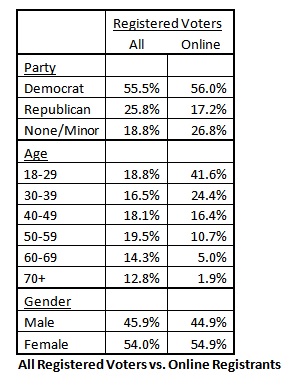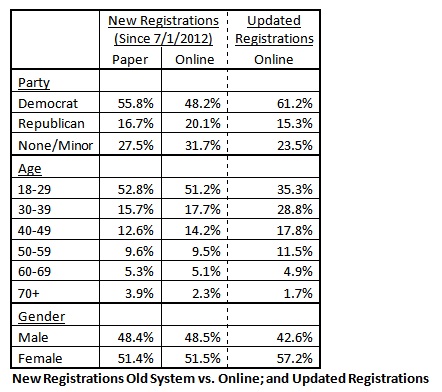
A sensible election administration reform is quietly sweeping the nation. According to the National Conference of State Legislatures, 18 states have implemented or recently adopted online voter registration, either initiating a new registration or updating an old one. Twelve other states have legislation winding its way through the legislative process. The reform is bipartisan in that both Democratic- and Republican-controlled state governments have adopted it, from Arizona to Maryland.
Legislators are attracted to online voter registration because it offers substantial election administration savings. Arizona, the first state to adopt online voter registration in 2002, reports that over 70 percent of registrations are now conducted online. The old paper system cost 83 cents to process each registration form, compared to 3 cents for the online system. The online system is more reliable than the paper system, reducing data entry errors that can disenfranchise voters and introduce other election administration costs when communications -- such as absentee ballots -- from election officials to voters are sent to a bad address. With state and local governments strapped for cash, online voter registration can reduce election administration costs by millions of dollars while simultaneously improving the integrity of the system. And for those who are concerned about fraud, federal law requires first time registrants to provide identification before they are allowed to vote.
So, who uses online voter registration? Which party may benefit? Data provided by the Maryland State Board of Elections illuminates patterns of online voter registration use. Keep in mind, Maryland is just one state, so these observations may not be applicable elsewhere.
A substantial number of people -- 124,819 -- used Maryland's online system from the date the system went live on July 1, 2012 through the most recent date where I have data, April 11, 2013. Among these, 39.8 percent used the online system to initiate a new registration and 60.2 percent updated an existing registration.

A simple comparison of all registered voters to those using the online system reveals that online registrants tend to be less often registered as Republicans -- by 8.5 percentage points -- and more likely to register as unaffiliated or a minor party -- by 8.0 percentage points. The partisan implications are likely a consequence of young people being much more likely to use the online system. For example, only 18.8 percent of registered voters are age 18-29, compared to 41.6 percent of online registrants. Women are also slightly more likely to use the online system compared to all registered voters, by 1.0 percentage points.
Young people are less likely to be registered to vote and might thus be more likely to need to use the online system. A better comparison to understand online voter registration usage patterns is to examine those who registered for the first time using the old paper system and the new online system. Ideally, those who updated their registrations using the two systems would also be compared, but because of data limitations only those who used the online system to update their registrations can be identified. There were 49,712 people who used the online system to initiate a new registration and 75,107 who used it to update an existing registration. There were 197,056 new registrants who used the old system to initiate a new registration since the online system went live on July 1, 2012.

New registrants using the online system are more likely to register as Republicans -- by 3.4 percentage points -- compared to new registrants using the old system. The age distribution among online users is slightly older, too, and just slightly more male. The well-known digital divide is likely a factor. Notably, the online pattern is evident despite another well-known divide that might work against it, where rural areas have less broadband access than urban areas. Fewer new registrants used the online system in more rural, Republican areas of the state -- 8.1 percent of new registrations using the old system originated from eleven counties in the panhandle or DelMarVa peninsula, compared with 6.3 percent using the online system.
Those using the online system to update an existing registration are strikingly more likely to be female -- by 5.7 percentage points -- than those who use the system to initiate a new registration. They are also strikingly more likely to be a registered Democrat -- by 13.0 percentage points -- and tend to be older. Reflection of those who need to update their registrations may at least partially explain these patterns. While some are people who have recently moved, some are also women who are recently married, adopted their husband's last name, and need to change their last name.
Overall, these patterns suggest that the partisan implications of online voter registration are unclear. Registered Republicans appear to more often use Maryland's online system to initiate a new registration while Democrats use it to update an existing registration. We, of course, do not know how these people would have behaved if online voter registration was unavailable. However, another important lesson appears to be that online access has not matured to the point yet where an online system can substitute for good old paper.